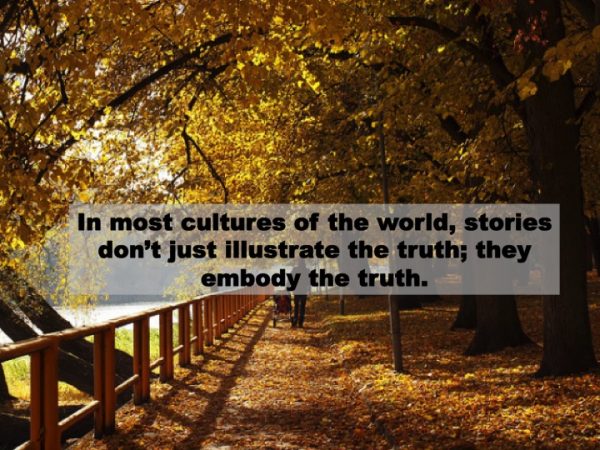Using Stories to Communicate
A recent group conversation was about about the use of stories to communicate truth. One person in the group said, “No way. We cannot entrust truth to be communicated through a story. We must convey facts and principles and concepts.”
This statement comes from common myths and misunderstandings that prevent many people from viewing story as a viable means of communicating truth. When you mention the word “story,” many people think of nursery tales or the kiddy corner of a bookstore. Stories are perceived as “just for fun” and are often relegated to children’s bedtime or elementary school.
Stories also suffer from a bad reputation.
In politics, business, and church, it is often assumed that people use stories if they have a weak case or in order to put a spin on something. Stories are seen as a device to stretch logic, and are not effective to convey deeper, serious, more important ideas. Many educated modernists believe that stories are illustrative and lightweight at best. This notion presumes that stories are nothing more than embroidery for more serious ideas and logic.
Moreover, for many the word “story” is not just a light word; it is a negative word. It means “untrue.” As a child, I would say to my grandmother, “I must have lost the change. It was in my pocket when I left the store.” To which she would say, “Now son, don’t you tell me a story.” With this negative view, a question rings in our ear, “Is there room for stories to serve as a major vehicle for communicating truth?” Some doubt it very much.
But have our preconceived notions about story caused us to dismiss one of the most powerful communication tools available to all people?
Stories reach into the hearts and minds of hearers to convey concepts, beliefs, values, attitudes, and facts where other approaches have difficulty. In most cultures of the world, stories don’t just illustrate the truth; they embody the truth.
That’s a high view of stories!

Leave a Reply